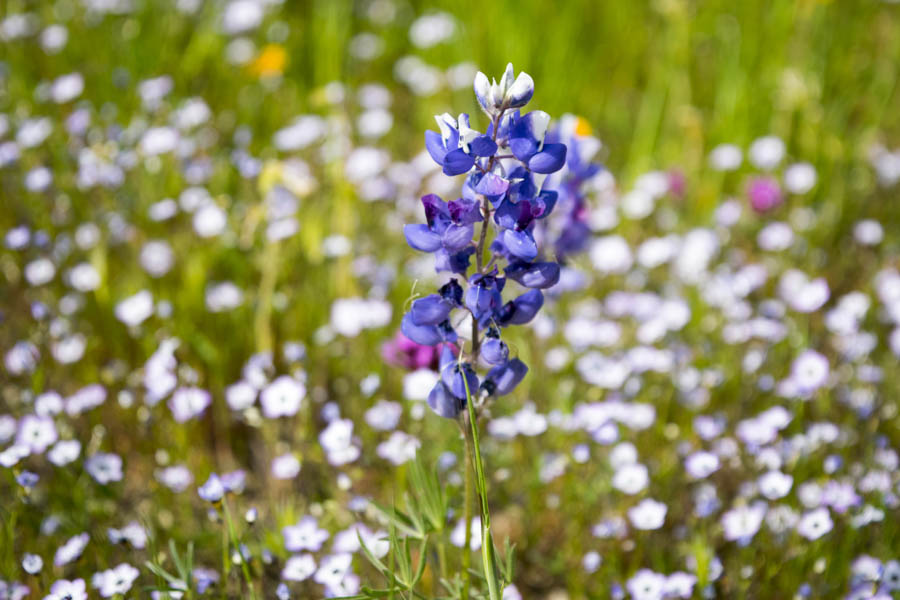Sky Lupine: A Lovely California Native Wildflower

Sky Lupine, Lupinus nanus, is a lovely, annual California native wildflower. Planted in mass alone, or in its traditional pairing with California Poppies, Sky Lupine provides a spectacular show.
How to Purchase. Purchase seeds, not transplants. Lupines, especially annual lupines, are sensitive to root disturbance.
Soil. Sky Lupine tolerates a wide variety of soil types, but thrives in well-draining, nutrient poor soil, and tolerates a soil pH from 6.0 to 8.0. As a member of the legume family, the roots of Sky Lupine have special nodules with nitrogen-fixing bacteria that enable sky lupine to thrive in nutrient poor soils.
Timing. Plant Sky Lupine between November and January and winter rains will prompt a late winter to spring bloom.
How to plant. Purchased seeds of Sky Lupine need to be pretreated before planting to soften the seed coats and allow water to penetrate the seeds. Pretreat Sky Lupine in one of two ways: gently rub the seeds with a sandpaper or place the seeds in a cup and pour hot (but not boiling) water over them and soak overnight.
Before broadcasting seed outdoors, choose a weed free location and water the area thoroughly. To ensure an even seed distribution, consider mixing a small amount of sand with the seed. Broadcast seeds over the area, spread a very, very light layer of soil over the top and water gently. Mist daily to keep soil moist until seeds emerge and plants establish.
Microclimate. Plant Sky Lupine in full sun.
Watering needs. In a typical year, fall and winter rains are sufficient to maintain Sky Lupine. Anxious gardeners may want to give supplemental water in February and March to increase bloom. In years when rains are lacking in fall and winter, give plants a gentle shower every 7 to 10 days.
Avoid overwatering and ensure that soil dries out between waterings. Too much water and a lack of air circulation can cause mildew. If water is allowed to accumulate, Sky Lupine may succumb to root rot.
Companion planting. Sky Lupine is traditionally planted with California Poppies and California Goldfields.
Don’t know your California climate zone? Click here.
Other articles of interest:
Getting Started With California Poppy
Tips for Using California Poppy in a Sustainable Garden
California Goldfields: Plant in Fall for a Burst of Golden Spring Color

